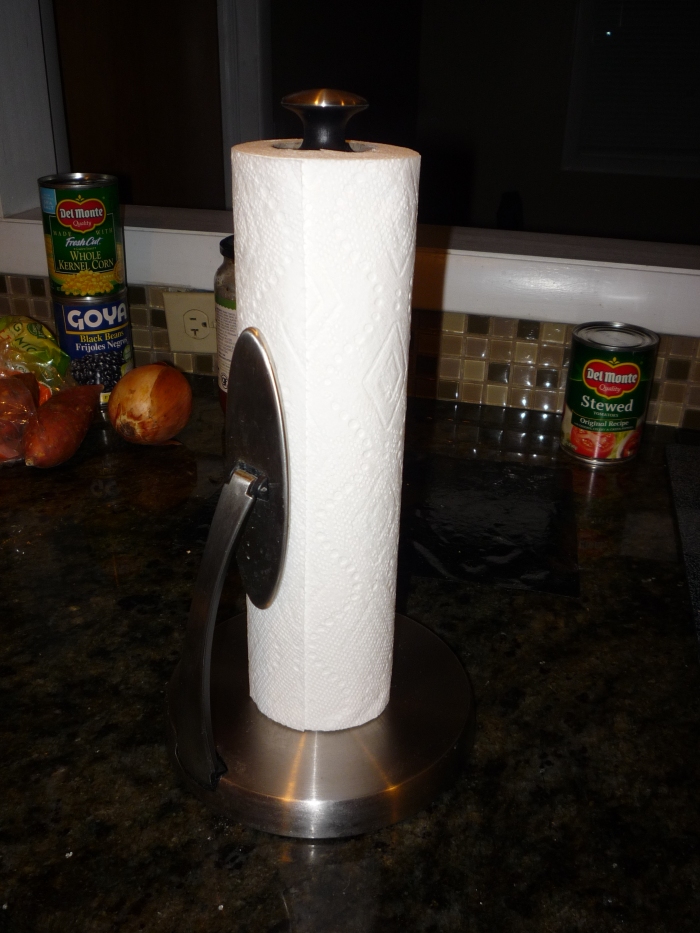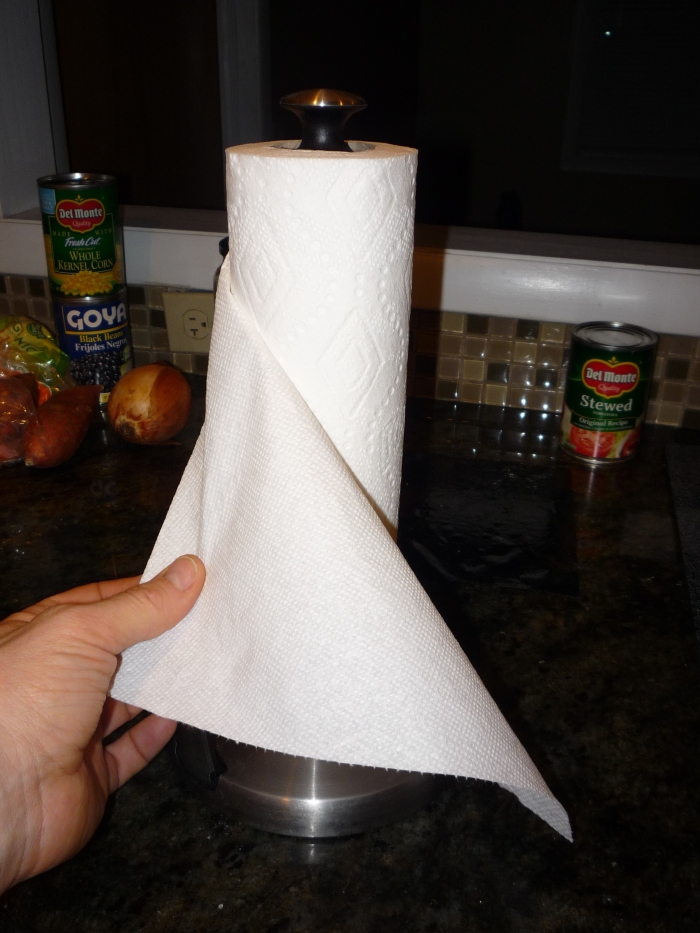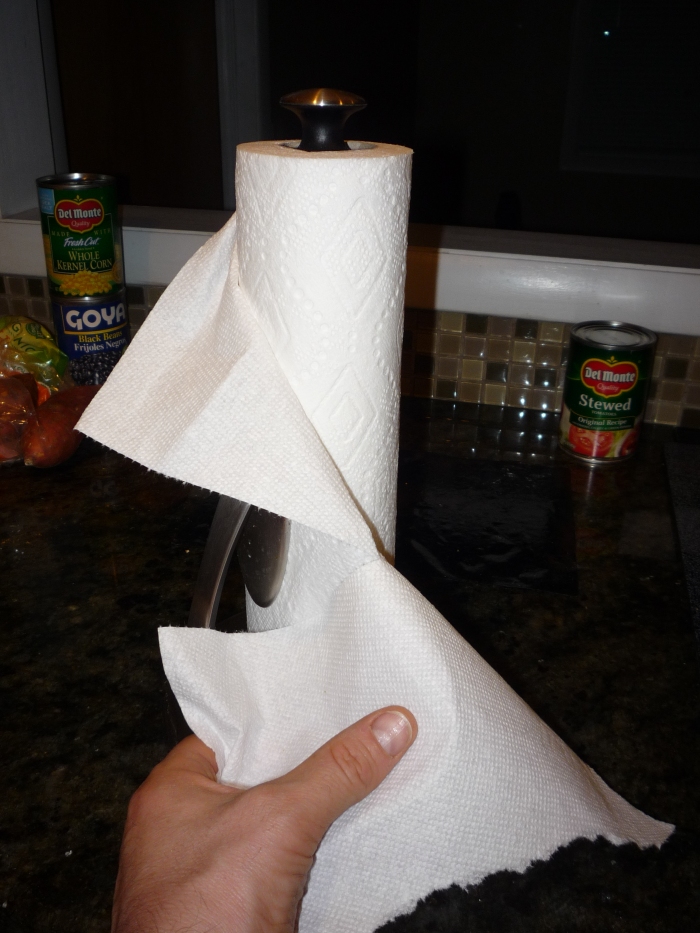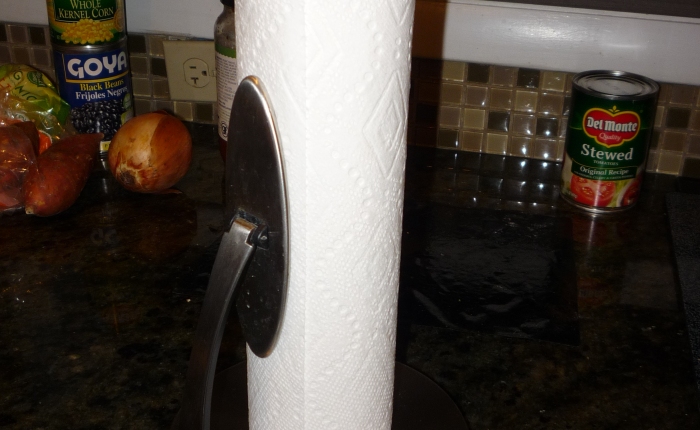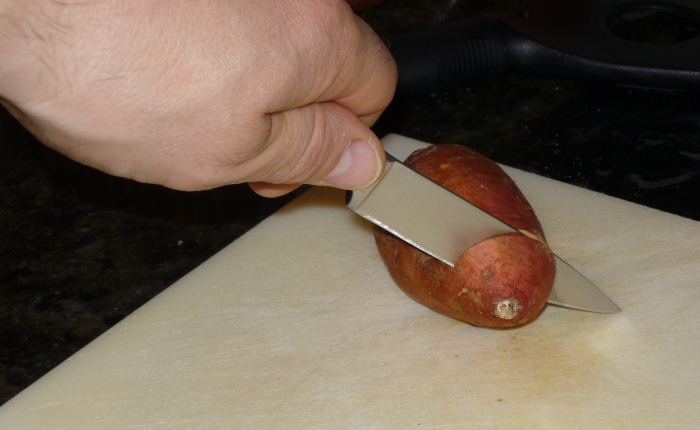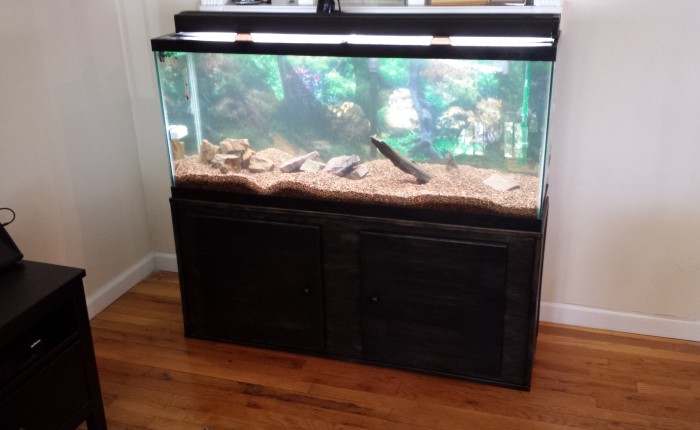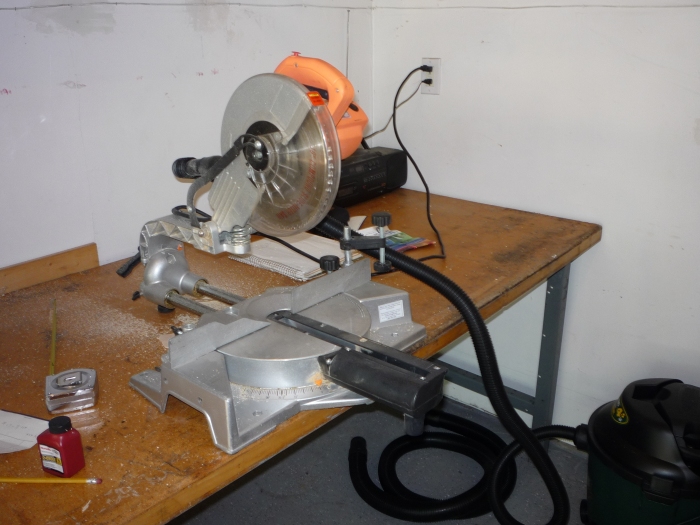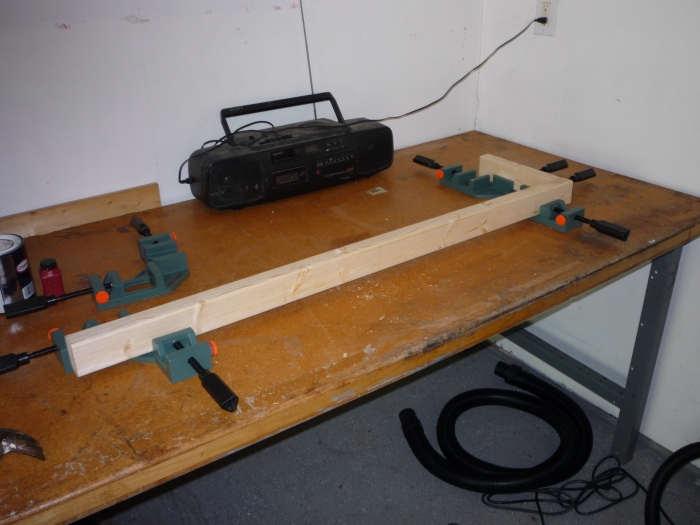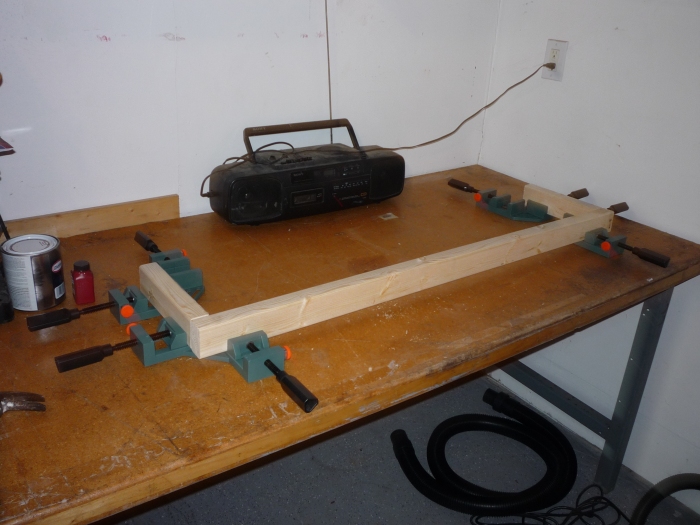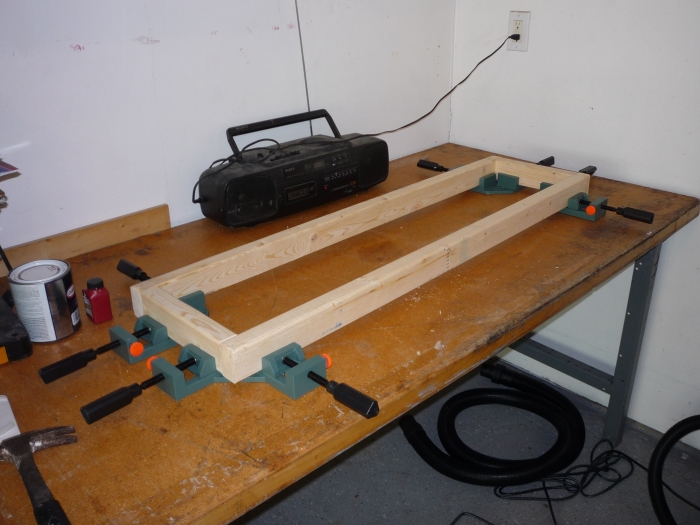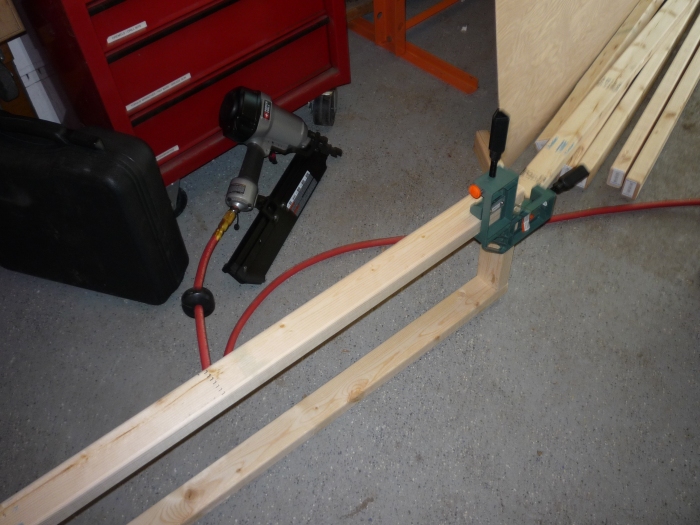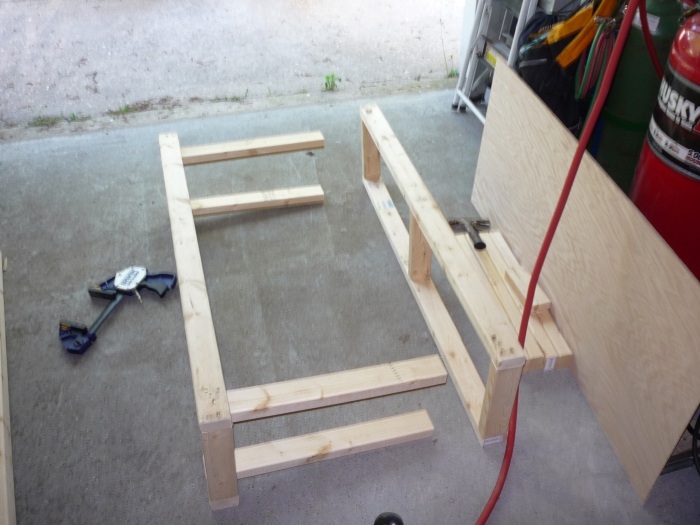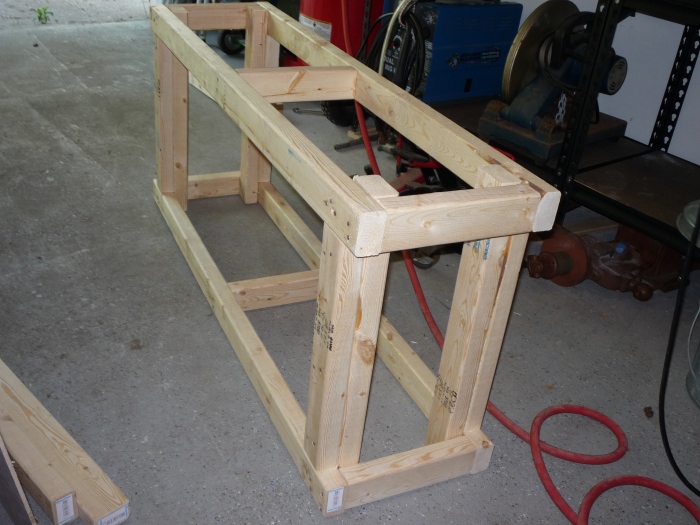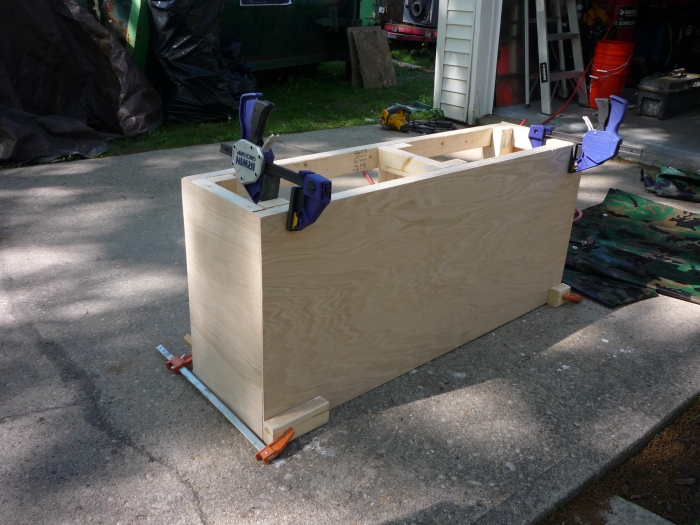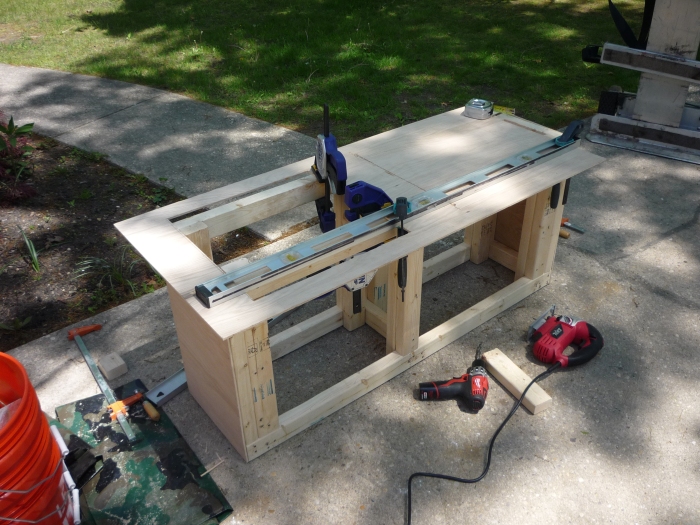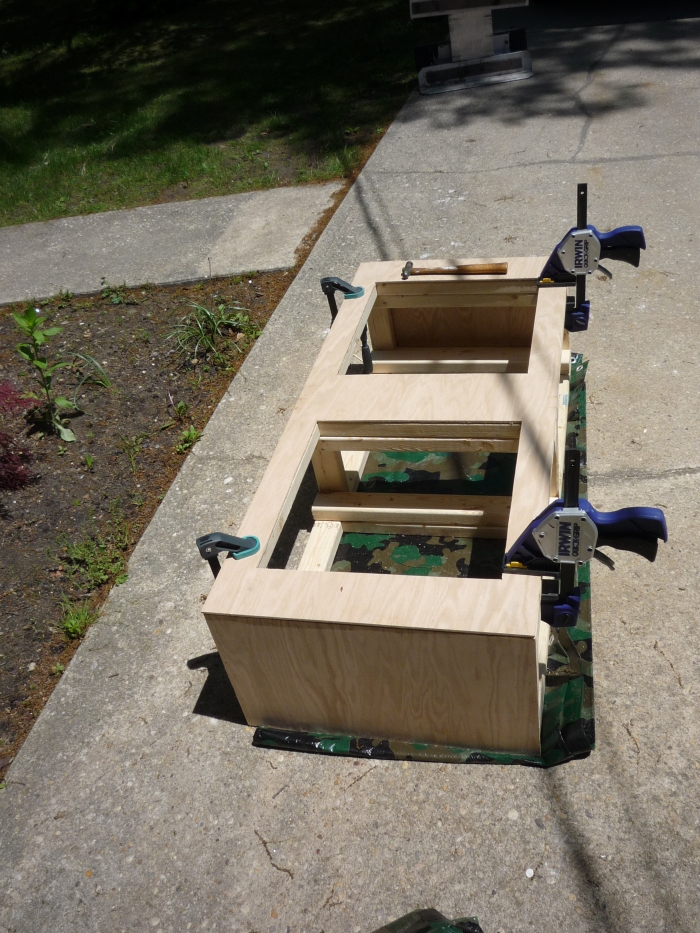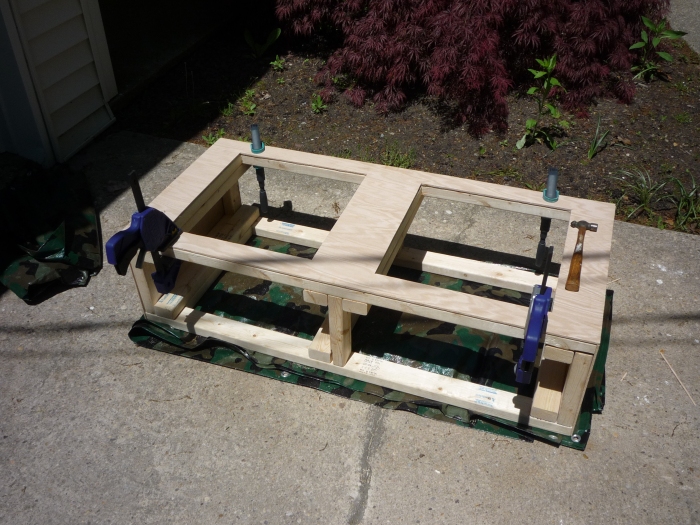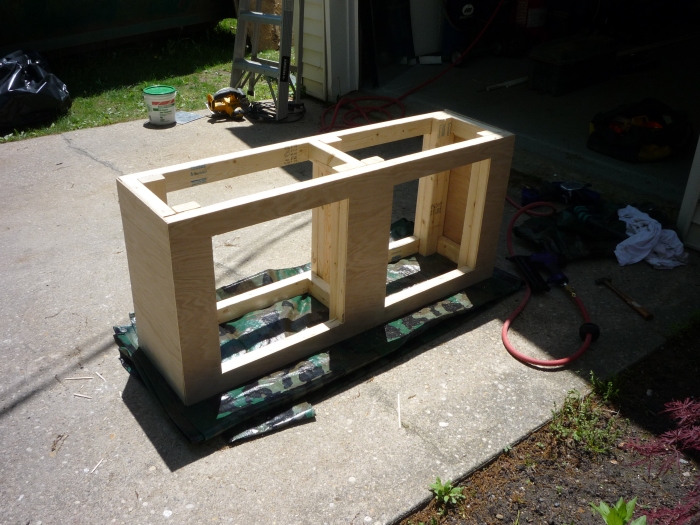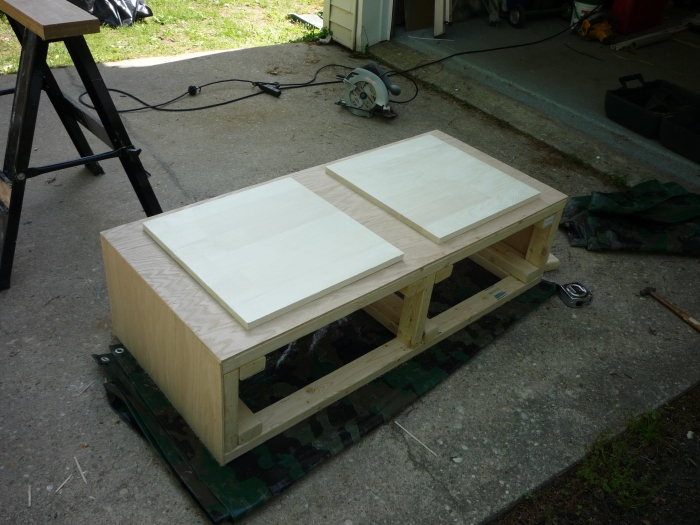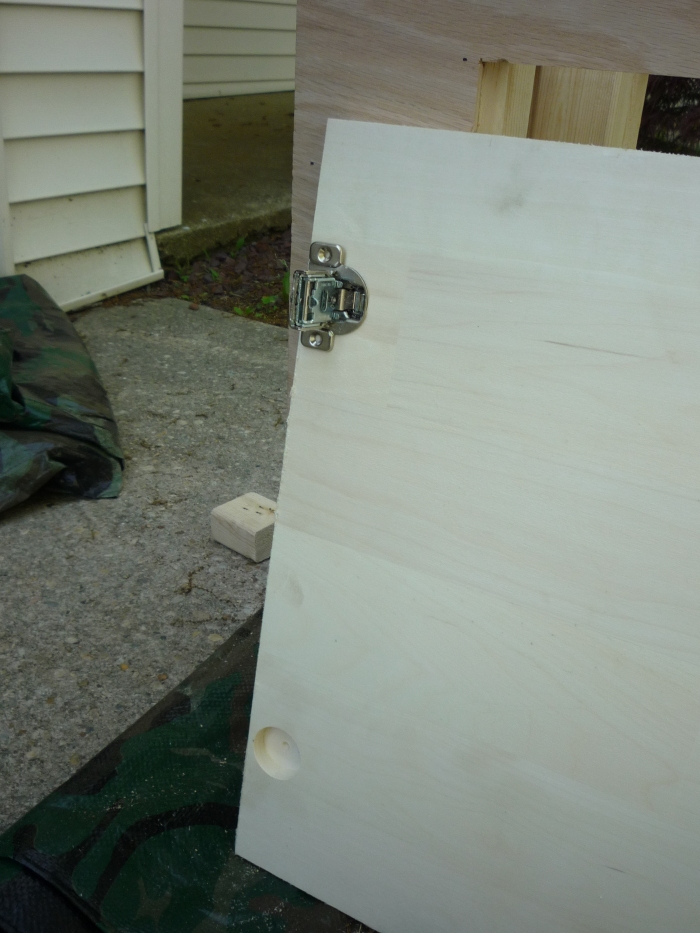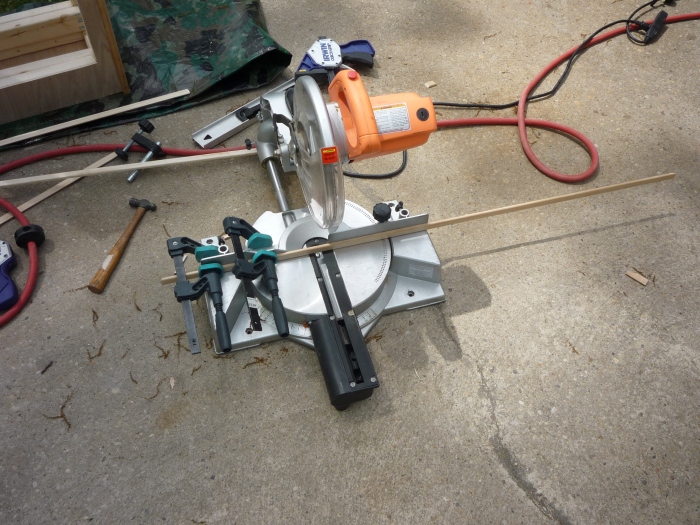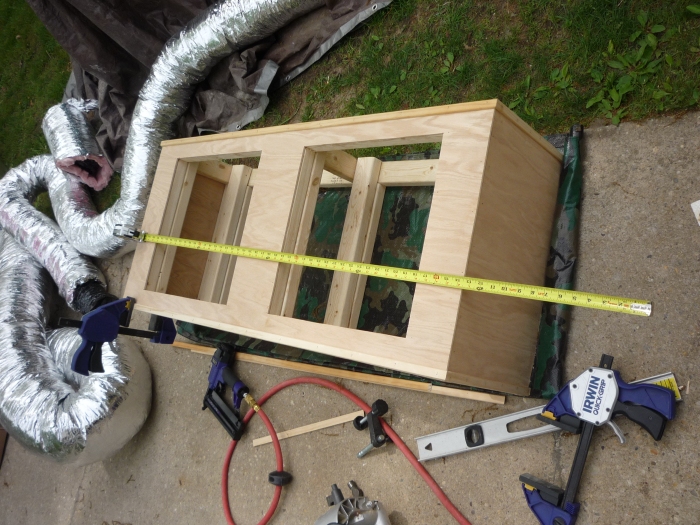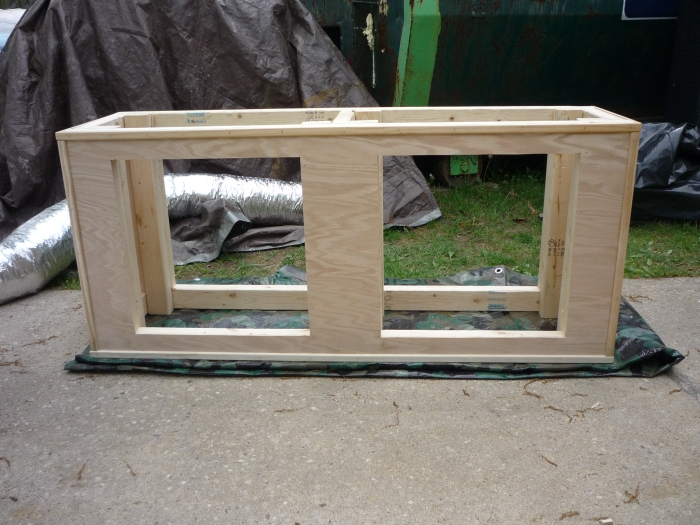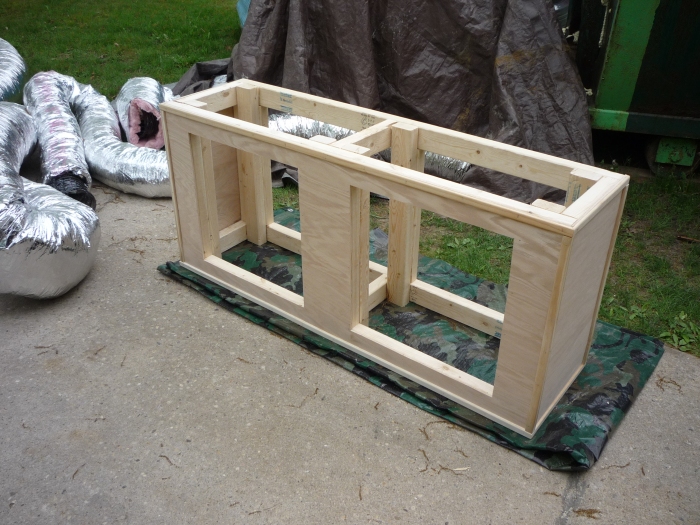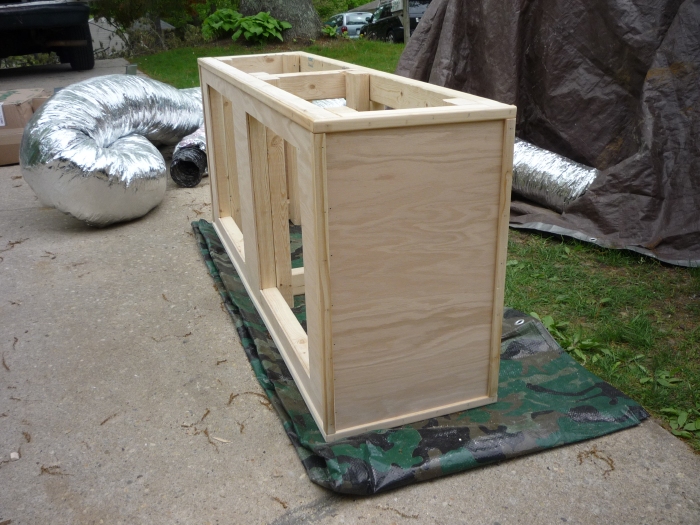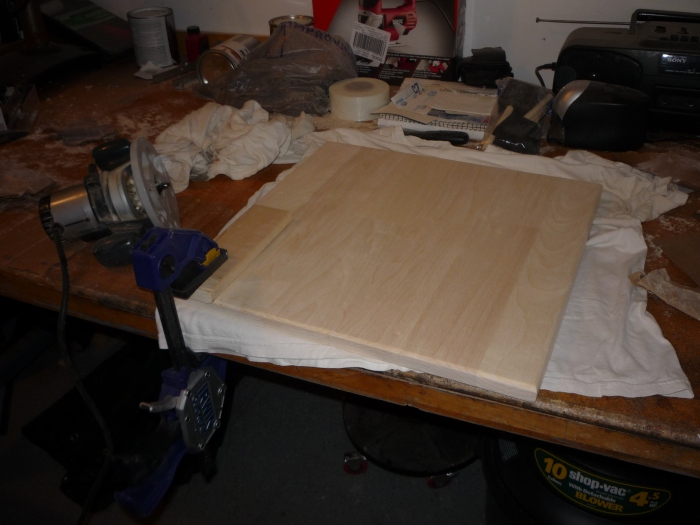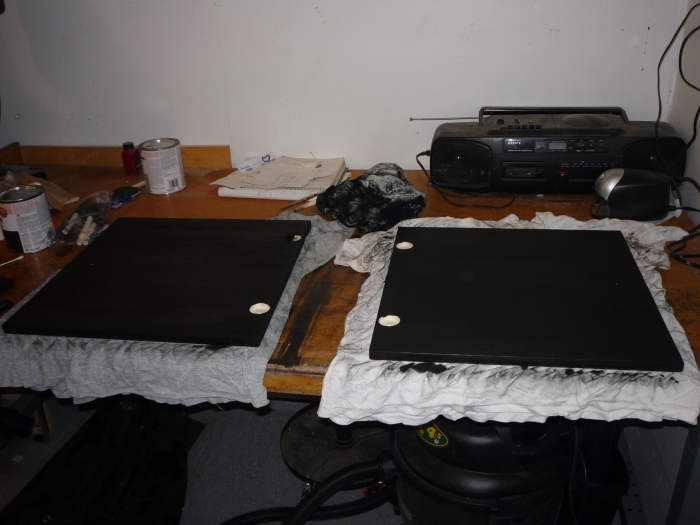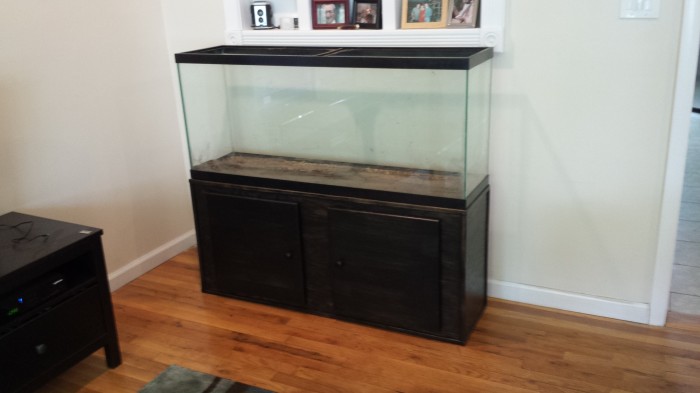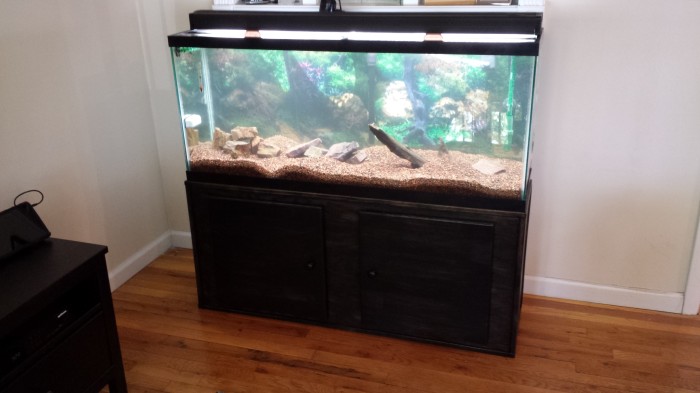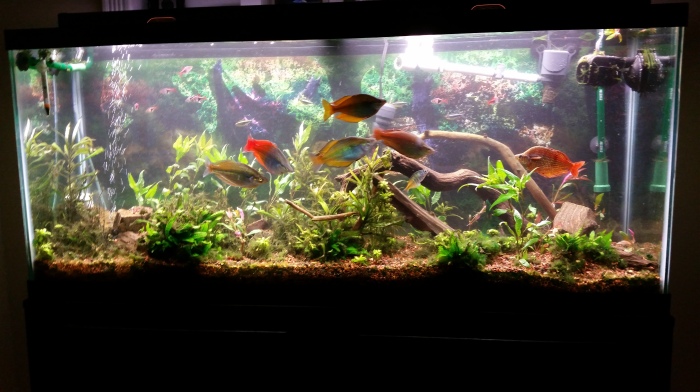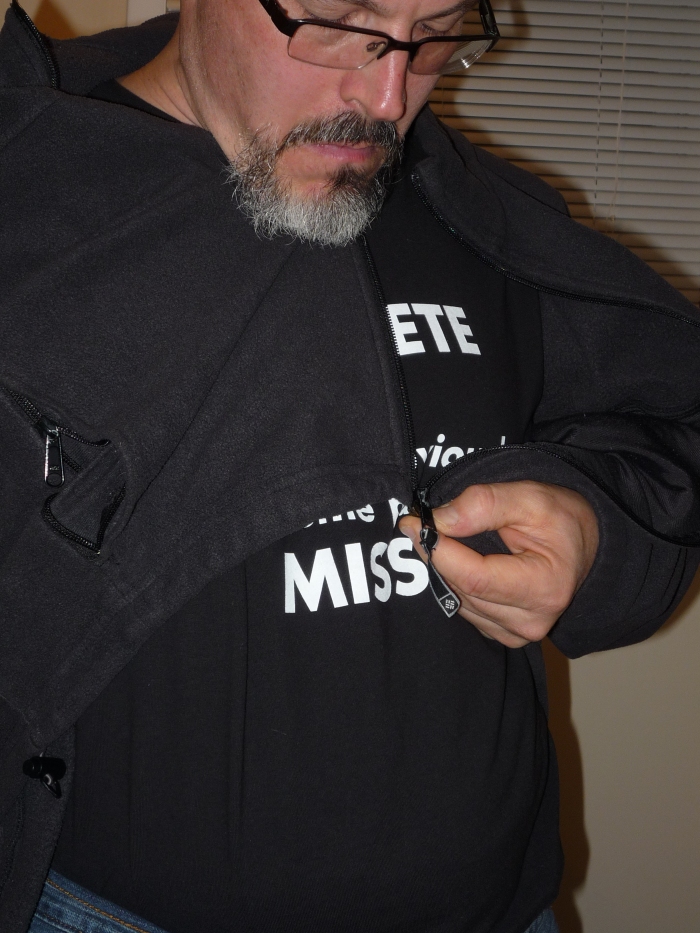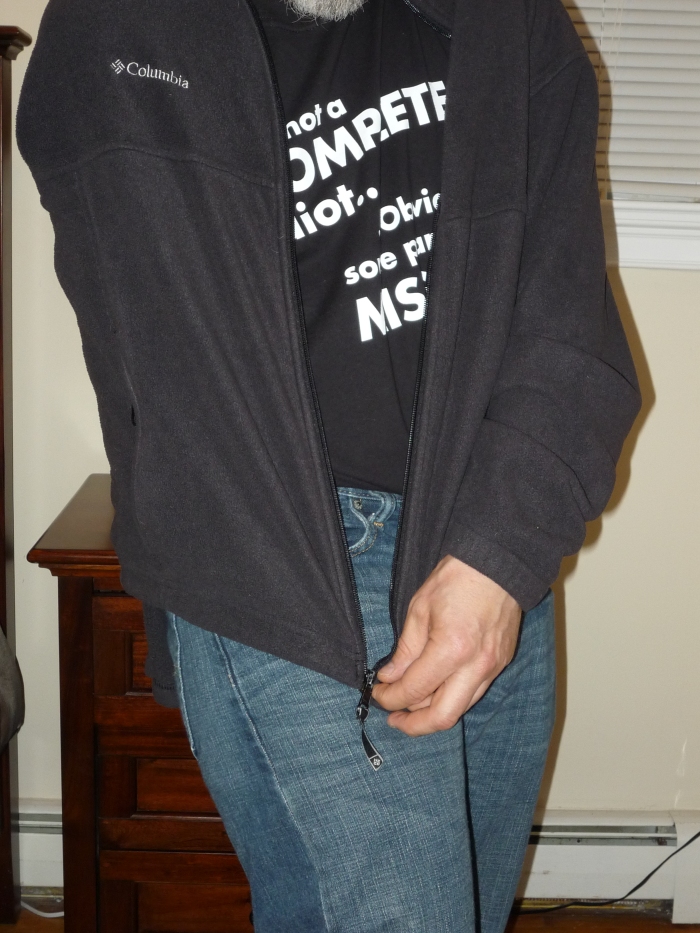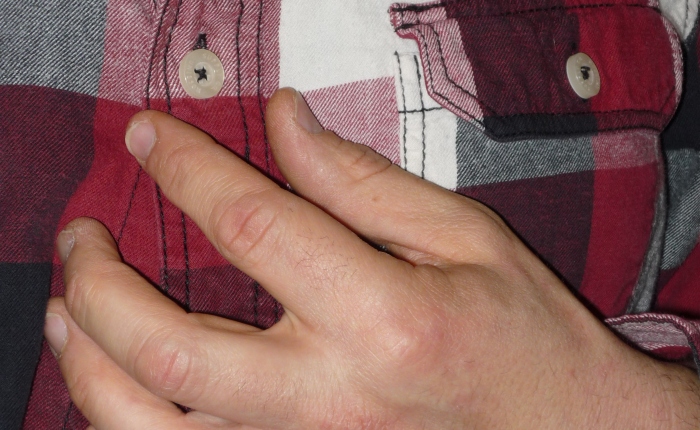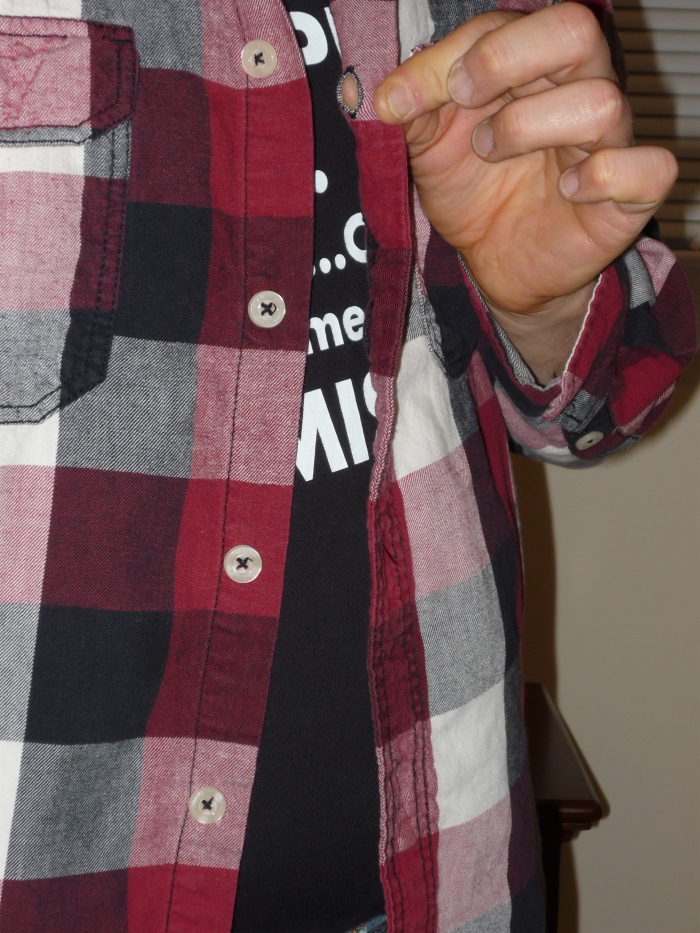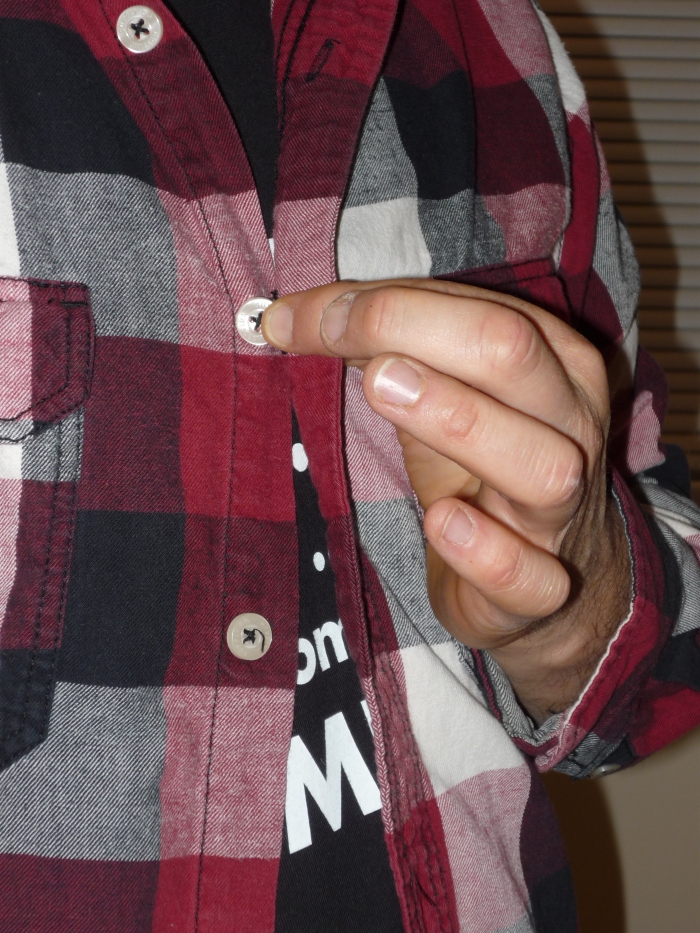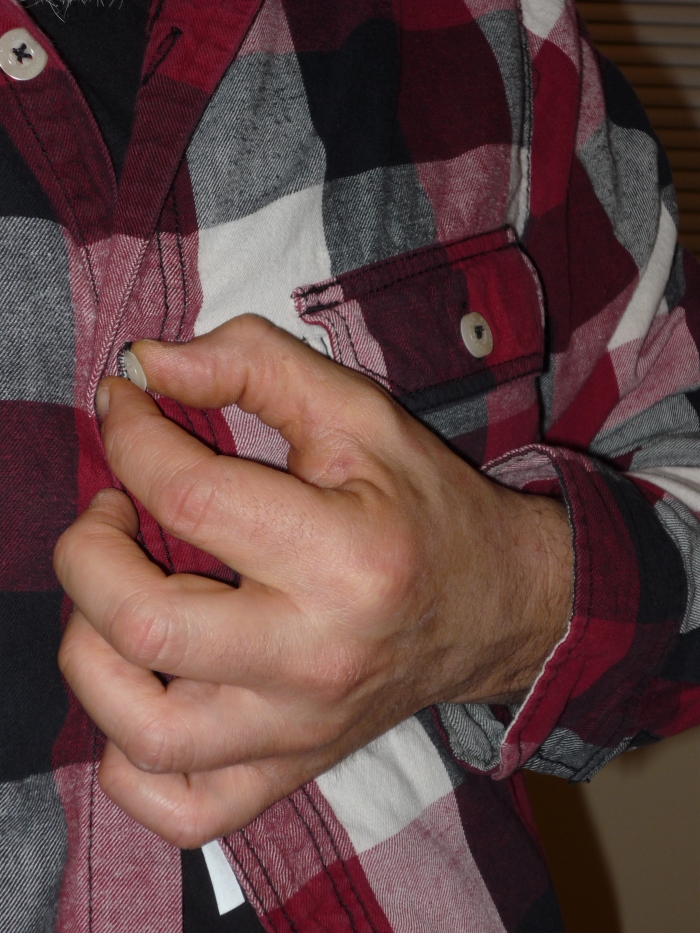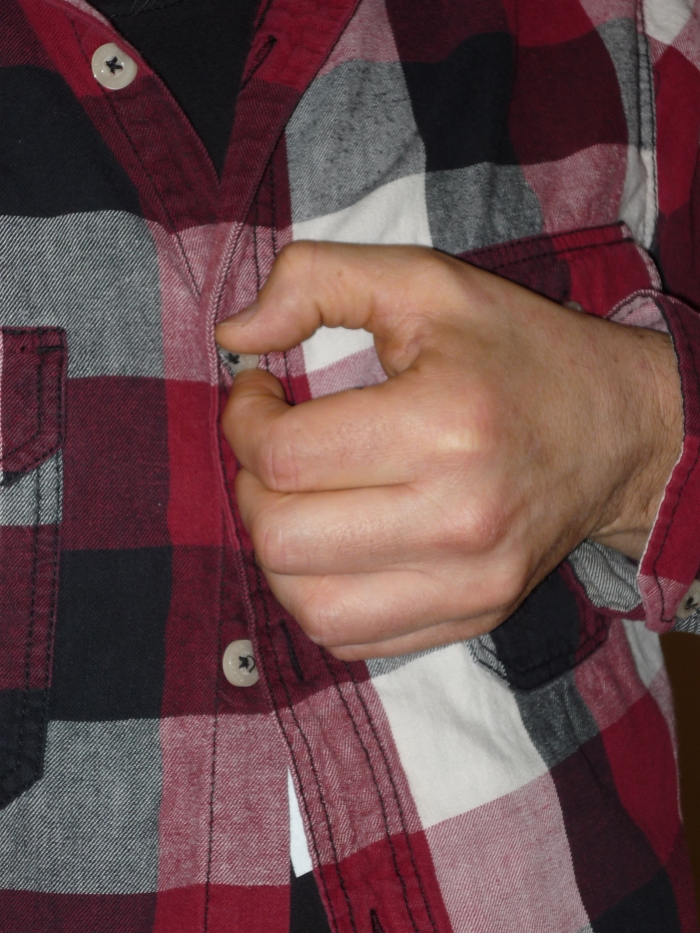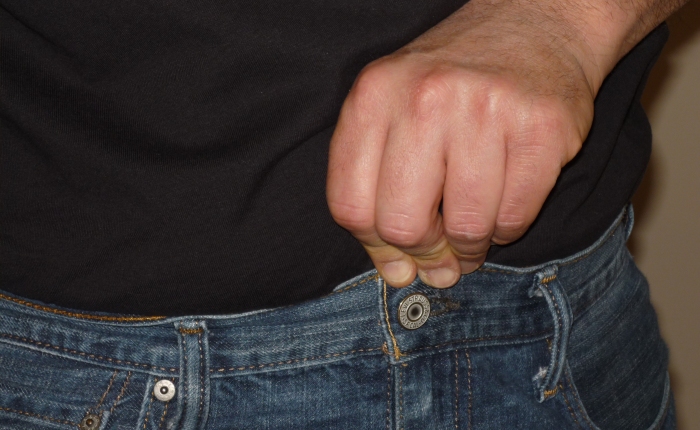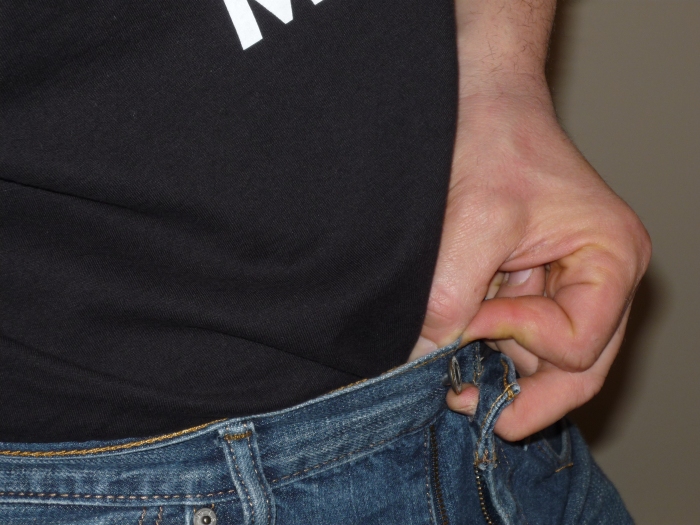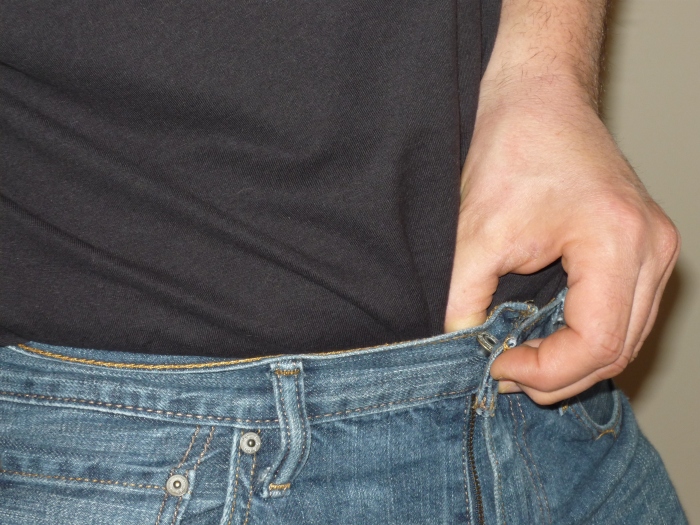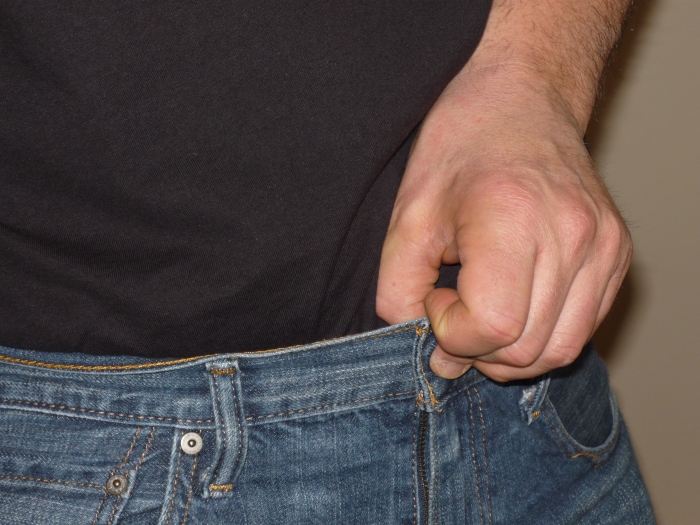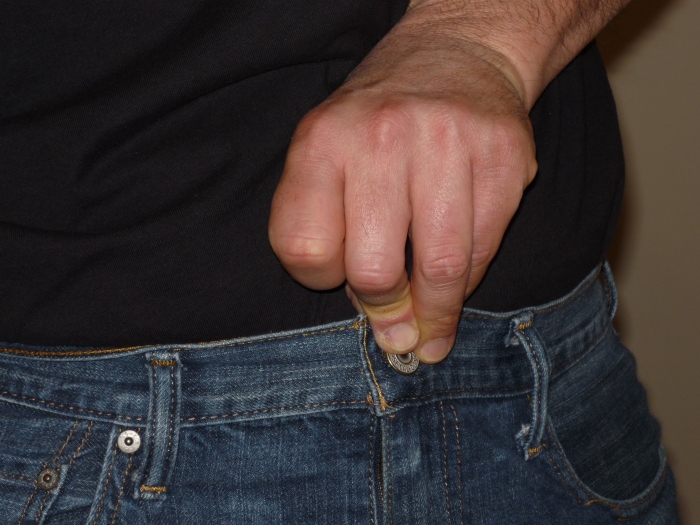…and any other ingredient you need for cooking. (Ah, juvenile toilet humor, it never gets old)
So you live alone like me and you’d like a little more than frozen microwave dinners and take out. That means cooking. I am by no means a chef. In fact I choke down quite a bit of awful tasting food because I’m marginal at best, but in the end, this isn’t about that. It’s about dealing with living independently, sans arm.
So if you want to cook, there are several things that you’ll need to do that generally requires two hands. This post is the first of a few posts about navigating the kitchen mano e mano. Well maybe just mano e nothing.
BTW: if you can’t tell, my Spanish is about as good as my cooking. Hell my english ain’t so good to… …and yes that was a smart ass joke for you grammar Nazis.
Ok, back to cooking (or something resembling it) one of the first things you’ll need to do is cut ingredients. This post is about how I go about that.
I use a few different tools for the job. Some of these are adaptive tools and some are not.
To start, I use a one handed cutting board. This was a gift, but a quick Google search shows several different styles to choose from. Mine has two stainless steel spikes and two sides.

It has some suction cups on the bottom to help it stay put.

I use mine in several ways. The first obvious way is to impale your food on the spikes. Here I’m cutting a sweet potato with a pairing knife.
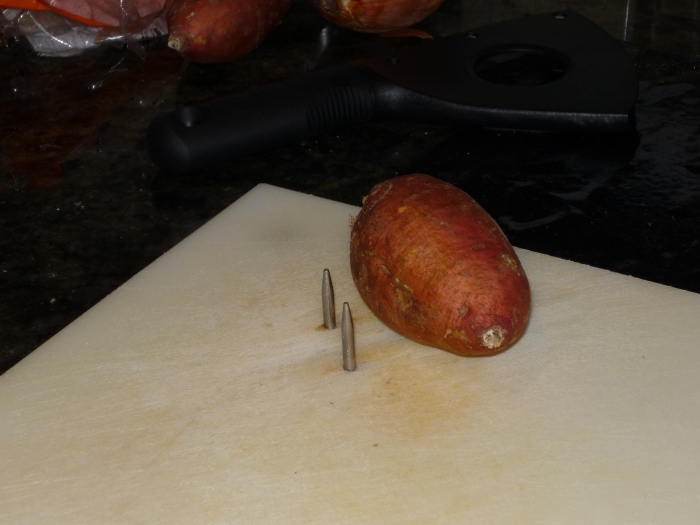
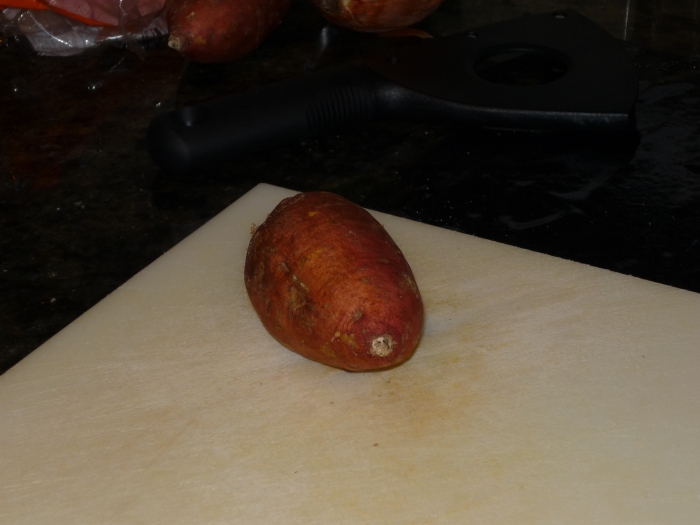
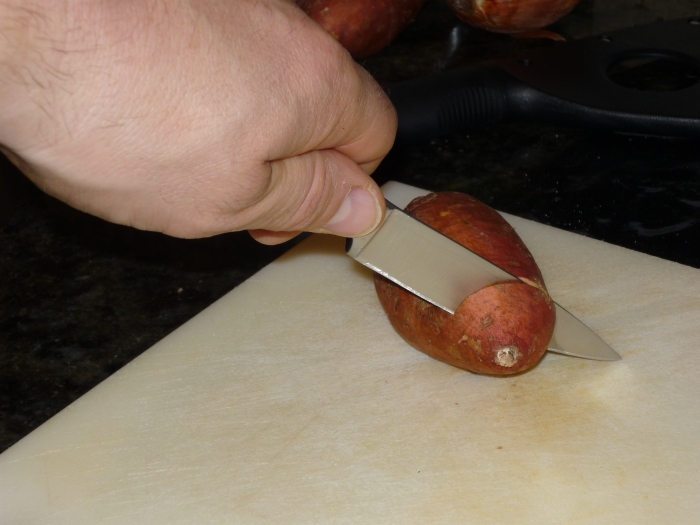
Some times it’s faster, with carrots, mushrooms and other items that you’ve already cut flat, to just use the spikes as way to keep the item still while you cut through it.
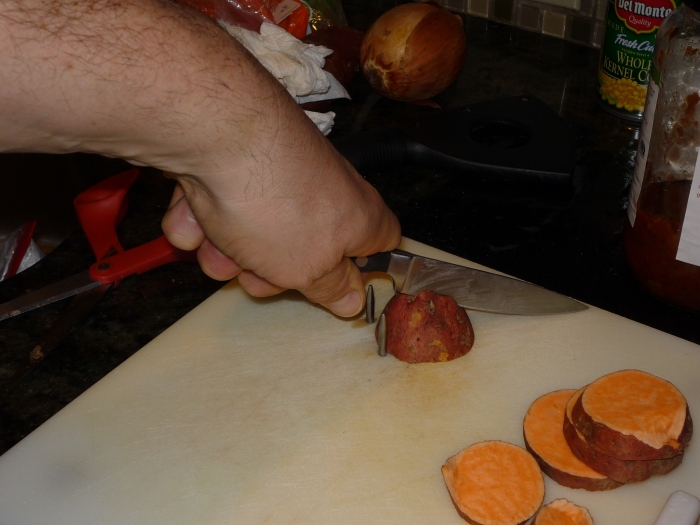
By placing the food against the spikes and drawing the knife through it.
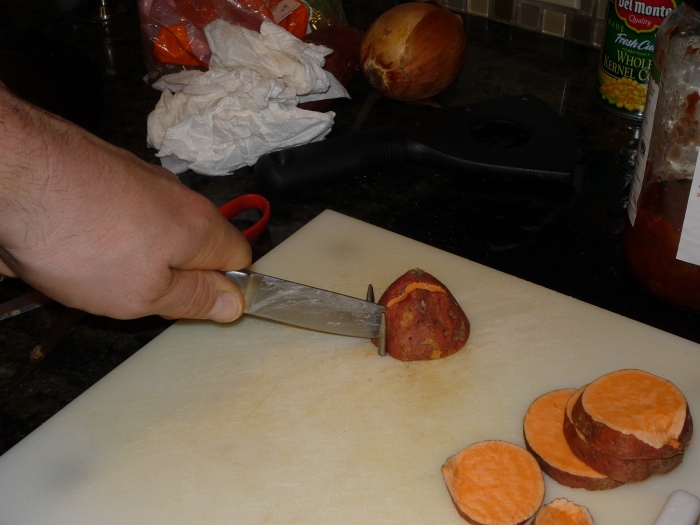
The side walls are supposed to be used for cutting a sandwich in half, I don’t eat many sandwiches so I haven’t used it for that. But I do use the side walls for other things. For instance, when trying to get the last few beans out of the bottom of a can, I’ll put the can in the corner and use it to push against, like so.
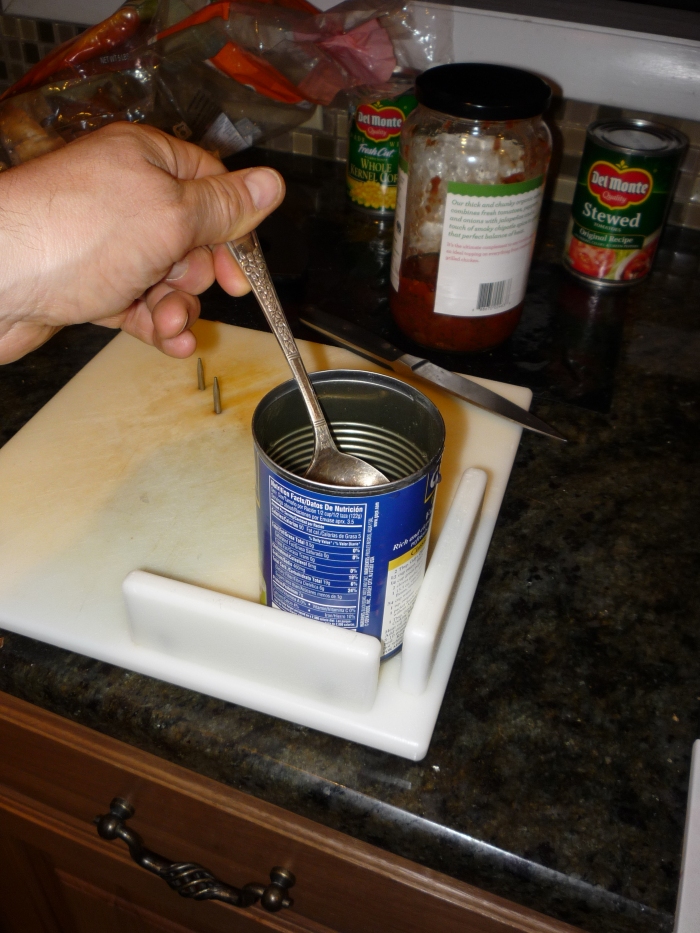
My dogs also like peanut butter filled bones, so I’ll clamp the bones to the board after washing them and use that to hold them steady for filling.
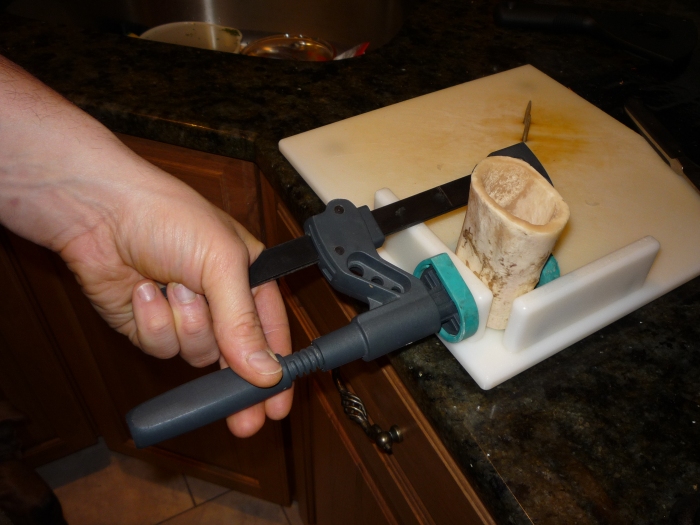
In addition to the cutting board, I suggest a good set of kitchen shears. I use these for getting in to bags of chips, opening microwave steamed veggie packets and other things like cutting herbs.
I also suggest, if you’re like me and you lost your right hand, get them in the lefty model. You’ll probably have to order lefty scissors online. I wasn’t able to find them locally and trying to use righty scissors lefty was an exercise in futility.
…And there was much cursing and gnashing of teeth…

Another great tool for cutting is a rocker knife. Another adaptive tool, these come in several styles. I have several. One I keep at my mother’s house when I’m in the mood for good food, not the slop I make.
Maybe I’ll get some home made manicotti if Mom’s reading this (Nudge nudge, wink wink) BTW, the correct pronunciation as Lawn Guyland Italians say it is… mon-i-CAWW-tee.. There, that wasn’t so hard now was it? But I digress….
I usually use the rocker knife for cutting thawed meat on the cutting board or the somewhat cooked meat at the dinner table. As Mel Gibson said in Braveheart… “You can take my arm, but you’ll never take my taste for a nice rare steak!” Or was it something about freedom? Whatever….
This knife allows you to use downward pressure and a rocking action to cut through your dinner.
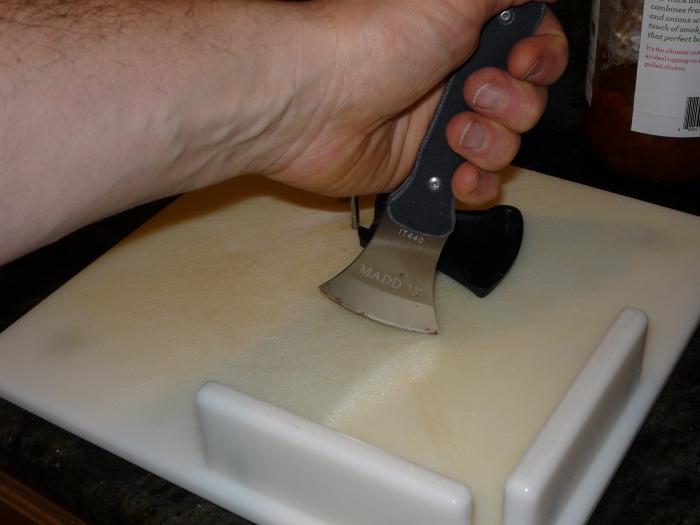
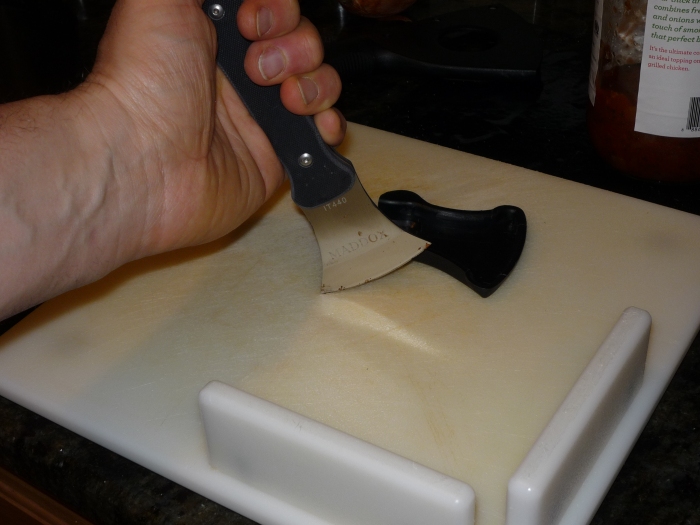
Lastly, in order to make using the cutting board easier, a sharp knife is imperative. A sharp knife is a safer knife. But be careful, as I’ve stated in other posts, you and I are already missing enough body parts, so pay attention and don’t blame me, I warned you…. Don’t be a dumb ass…
Anyway, to keep my knives sharp, I use an electric knife sharpener. I got mine at the local warehouse club that sells peanut butter by the truck load.
..And there was much dog rejoicing at the sound of that in my house…
You just turn it on and if you’re a guy like me, you ruin a knife, swear, and THEN read the directions… Replace said ruined knife and sharpen away.
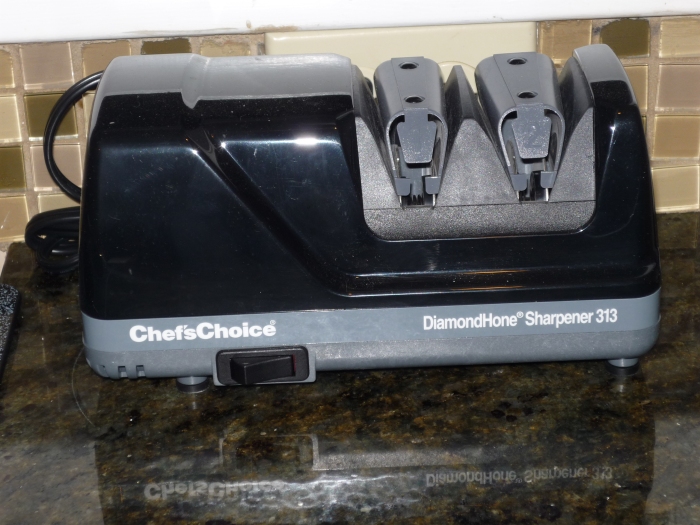
More kitchen posts to follow….
Addendum…. I almost forgot…
One more cutting tool, for the bigger jobs, the cutting board can take too long. For these things, like when I make 4 Gallons of my step fathers Hot Pepper salad recipe, I use a food processor.
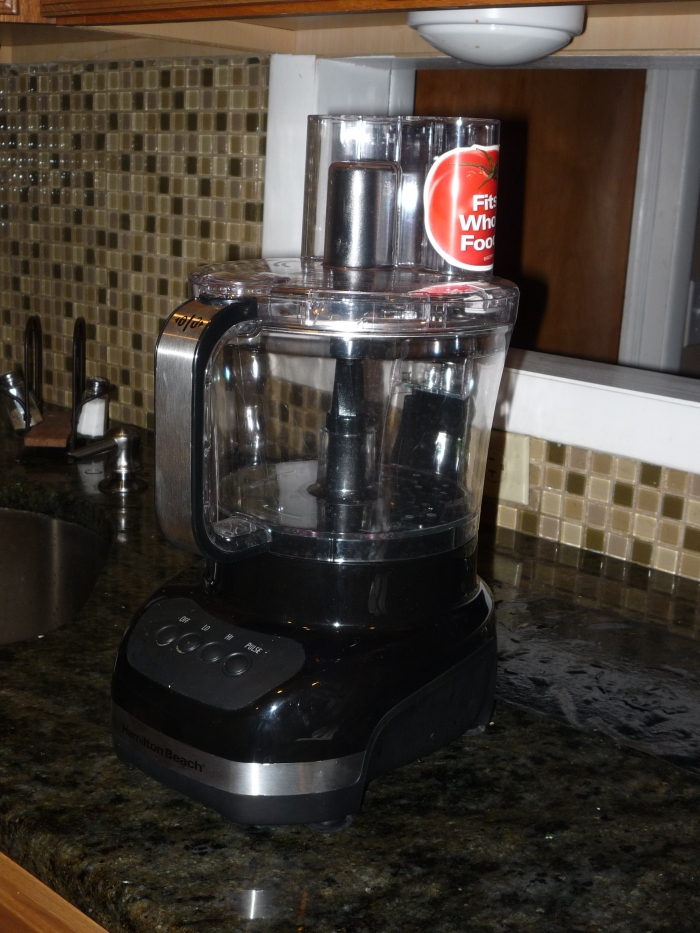
I made sure that the one I bought had suction cups to hold it in place..

Ok, NOW there are more Kitchen posts to follow….
